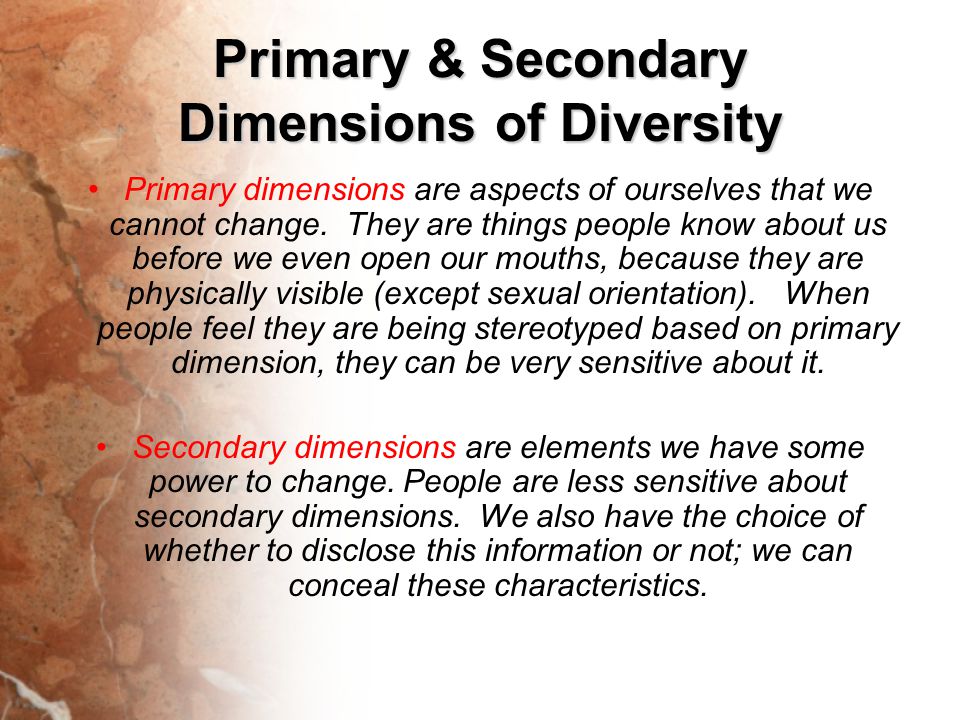Discover Deeper Insights With Additional Measurements
Additional measurements offer as an effective tool in the world of information evaluation, providing a nuanced point of view that goes beyond surface-level observations. Remain tuned to find just how second measurements can transform the method you translate and utilize your information for critical advantages.
Benefits of Additional Measurements

One of the vital benefits of second dimensions is the capability to improve the context of the primary information. This included context makes it possible for experts to draw even more exact final thoughts and make notified choices based on an extra comprehensive sight of the data. Additionally, second dimensions assist in providing a much more holistic view of the partnerships in between different variables, consequently aiding in the identification of underlying factors that might affect the key dataset.
Fundamentally, second dimensions play a vital function in improving information evaluation procedures, providing a much more nuanced point of view that can cause actionable referrals and valuable understandings.
Application Tips for Secondary Measurements
Carrying out secondary dimensions successfully needs a critical strategy that aligns with the specific goals of the information evaluation process. To start, it is crucial to clearly define the goals of the evaluation and identify the key metrics that will certainly offer the most important insights - secondary dimensions. Select additional measurements that enhance the main measurements and aid in revealing deeper patterns or connections within the data
When implementing additional measurements, it is important to take into consideration the context in which the evaluation will be carried out. Recognizing the audience and their info needs will certainly lead the option of relevant secondary dimensions that add meaningful context to the primary information points. In addition, make sure that the additional dimensions chosen are suitable with the primary measurements and can be efficiently compared or incorporated to extract valuable insights.
In addition, it is suggested to examine various combinations of key and secondary measurements to explore different perspectives and reveal concealed connections within the data. Routinely reviewing and refining the selection of secondary measurements based upon the evolving analytical needs will certainly ensure the analysis stays informative and pertinent.
Analyzing Information With Secondary Measurements

When analyzing data with second measurements, it is crucial to think about exactly how various variables interact with each other. By cross-referencing key information with secondary measurements, experts can discover connections and reliances that supply an even more all natural sight of the data. This approach not just boosts the accuracy of understandings however also aids in making more informed decisions based on the findings.
Additionally, examining data with secondary measurements enables the recognition of outliers or anomalies that might influence the total analysis. By delving deeper into the information through additional measurements, analysts can get a more profound understanding of the underlying factors driving the trends observed in the key dataset.
Making Best Use Of Insights Via Additional Measurements
To draw out a greater level of depth and accuracy from information analysis, leveraging secondary measurements is vital for making best use of insights. By incorporating secondary dimensions into your analysis, you can reveal beneficial partnerships and patterns that may not be instantly noticeable when checking out information through a main dimension alone. Second dimensions permit you to cut and dice your data even more, supplying a much more detailed understanding of the factors influencing your metrics.
When used effectively, second dimensions can improve the context of your main information, using a more nuanced viewpoint on your analysis. For instance, by including additional dimensions such as geography, user, or time demographics, you can acquire a deeper understanding of how different sections connect with your material or items.
Additionally, secondary measurements can assist you determine outliers, i thought about this trends, and connections that could or else go unnoticed. By discovering your information from numerous angles, you can draw out richer understandings and make more informed choices based upon a thorough understanding of the underlying factors at play.
## Usual Mistakes to Stay Clear Of When Utilizing Additional Dimensions
When including additional measurements right into information evaluation, it is essential to be conscious of typical errors that can hinder the extraction of useful insights. One common mistake is the misuse of additional measurements without a clear purpose in mind. It is vital to define particular goals and concerns before selecting secondary dimensions to ensure they line up with the analysis purpose.
Another blunder to avoid is overcomplicating the evaluation by consisting of a lot of secondary view measurements simultaneously. This can bring about information overload and make it challenging to draw significant verdicts from the information. It is recommended to start with a couple of pertinent secondary dimensions and gradually include extra as required.
Additionally, neglecting information honesty concerns can dramatically affect the accuracy of understandings originated from secondary dimensions. Incomplete or imprecise information can distort the evaluation results and mislead decision-making procedures. Routinely validating and cleaning the information is critical to make certain the integrity of the insights created.
Conclusion
In conclusion, the critical use of additional dimensions in data evaluation provides a powerful device for unlocking deeper understandings and improving decision-making procedures. By integrating extra layers of details, analysts can acquire a more extensive understanding of their dataset, uncover hidden fads, and identify vital elements affecting outcomes. Through cautious factor to consider and implementation of second dimensions, scientists can make the most of the worth of their data and drive notified decision-making in numerous fields.
Select second measurements that complement the key dimensions and help in uncovering deeper patterns or relationships within the data.
Furthermore, ensure that the additional measurements picked are compatible with the primary measurements and can be properly contrasted or combined to extract important insights.
Making use of second dimensions in data evaluation enhances the depth and breadth of understandings obtained from the key information points. By cross-referencing primary data with second measurements, experts can uncover correlations and reliances that use an even more all natural view of the information. By including second measurements right into your evaluation, you can uncover beneficial relationships and patterns that may not be right away evident when looking at information with a key dimension alone.
Comments on “Enhancing Search Engine Optimization Performance with Secondary Dimensions: Ideal Practices”